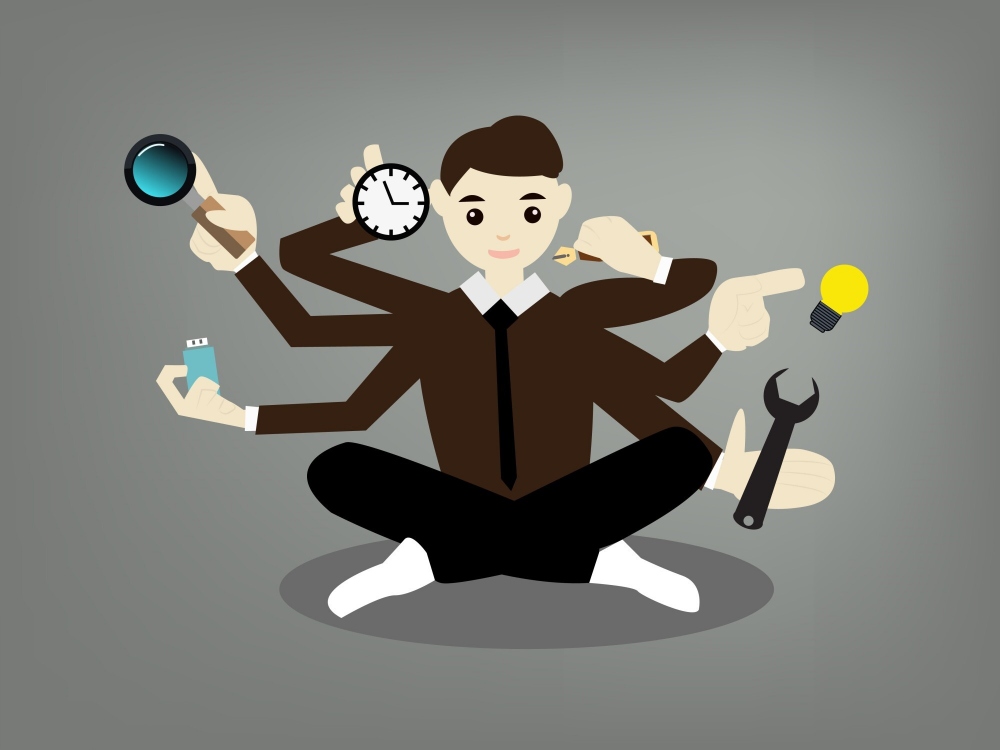Do you know how dangerous the myth of multitasking is for your productivity? You could lose up to 40% of your most productive time shifting between tasks. It’s time to learn why this myth is part of so many professionals’ daily lives.
Discover how to overcome this common misconception. Stop wasting your precious time and start hitting new levels of efficiency in your workflow with this guide.
What Is Multitasking?
Maybe you don’t even know you’re multitasking, so here’s a clear definition for your personal reference. Multitasking involves splitting one’s attention between multiple tasks at once.
Attempting to do as many things as possible at once rival computational power. Humanity can’t process multiple tasks at once, despite our technology’s ability to do so. Whether it’s competing with machines or just your coworkers, working on multiple tasks simultaneously causes numerous problems.
How the Multitasking Myth Hurts Your Productivity
The myth of multitasking adversely impacts productivity in several ways. Your memory, creativity, and concentration all factor into how much work you get done. When these areas of your work suffer, your motivation does, too.
Split Attention
Did you know only two percent of people can multitask successfully? Even this tiny percentage of people can only focus on minimal tasks with a low cognitive drain. Think of basic administrative tasks with easily correctable mistakes.
Even when you split your attention between the least demanding tasks, the quality of your work suffers. Your ability to focus on tasks also diminishes the quality of work produced. When you split your attention, even the most basic tasks take more time to complete, reducing overall productivity.
Error Rate
Your ability to recognize errors depends on attention to detail. If you split your attention between too many tasks, the likelihood of errors increases. Depending on your daily responsibilities, this can lead to costly mistakes.
If your work requires accuracy, you could cost clients or your company revenue. Even if your role doesn’t necessitate high accuracy, you’re still wasting precious time. And for productivity and efficiency, time is a priceless resource, regardless of cost.
Lost Time
Losing time is no joke. If you fall prey to the myth of multitasking, you’re likely to waste this precious resource. If you split your attention and increase error rates, you lose time to redoing work.
Whether you have to redo tasks or work overtime to complete tasks over a longer time period, it’s a waste. The best way to avoid losing time to multitasking is to focus on one thing at a time. Lost time causes interruptions in workflows and operational processes for you and your company.
Poor Concentration
Plenty of people struggle with concentration and focus. But intentionally splitting your attention through multitasking results in the same issue. Poor concentration causes all sorts of issues for productivity, accuracy, and efficiency.
If you can’t focus on tasks, you’ll lose precious time. You’re also far more likely to see an increase in the errors of repetitive tasks like data entry. When you can’t focus on work, it’s that much harder to get ahead on daily and long-term tasks.
Less Creativity
If your attention’s split in three to five different directions, how can you dedicate the brainpower to creating something? Creativity doesn’t use up your entire brain, but it does require tons of focus. If your attention’s stretched too thin, you won’t have the concentration for creative tasks.
The less creative you are, the less innovative you are for problem-solving. Lower creativity is a big concern for creative industries, such as marketers, designers, and other content creators. If you can’t create, you can’t do the best at your job.
Low Motivation
An unexpected consequence of spreading yourself too thin is the psychological downside. Less focus, more errors, and lost time can tank your motivation. This can produce a significant toll on your workload and personal wellness.
If your motivation is low, you’ll work less. Working less can impact your income or working relationships. In turn, you might suffer from more stress and other negative effects.
Low motivation might inspire you to believe in the multitasking myth even more. It becomes a vicious cycle of catching up and spreading yourself too thin.
Learn How to Overcome the Myth of Multitasking
Fortunately for you, overcoming this myth isn’t impossible. Now that you’re aware of some multitasking examples, you can start troubleshooting how to avoid them. With the right tools, you can kill your distractions and get ahead of the curve.
Setapp is one such tool to help you overcome multitasking’s consequences. Visit https://setapp.com/lifestyle/how-to-improve-concentration to discover a series of solutions to eliminate distraction.
With the right tool, you can start on small tasks and build yourself over time. Eliminating distractions can help you build your concentration. The more you can concentrate, the less you’ll feel the need to multitask.
Overcoming the need to multitask won’t happen overnight. If you’ve believed in this myth for a while, you’ll need to teach yourself new habits. You’ll have to fight the temptation to split your attention across apps, devices, and responsibilities.
Discover Other Ways to Boost Productivity and Eliminate Distractions
Now you know why the myth of multitasking is so problematic. With this better understanding of the consequences of splitting your attention, you can start to grow. You can teach yourself new tactics and habits to boost productivity.
To discover more ways to eliminate distraction and elevate your work life, check out our other articles. You’ll find all the resources you need to bring your business to new heights.







Recent Comments